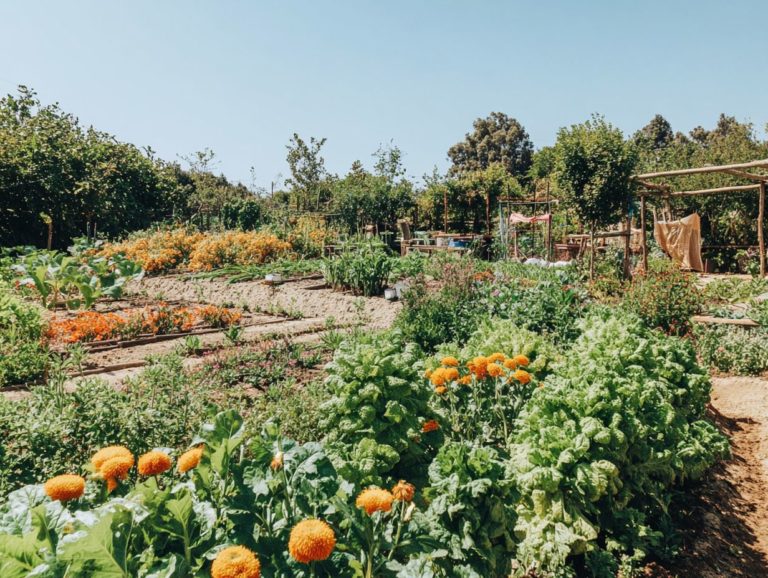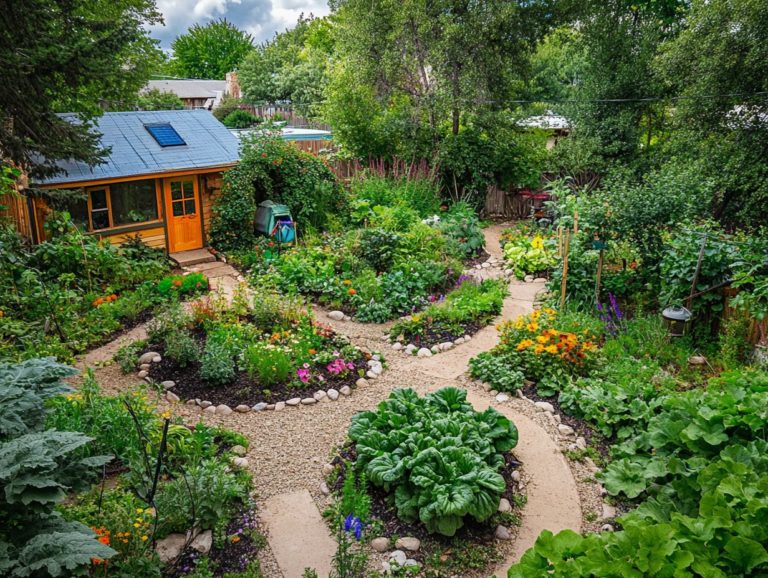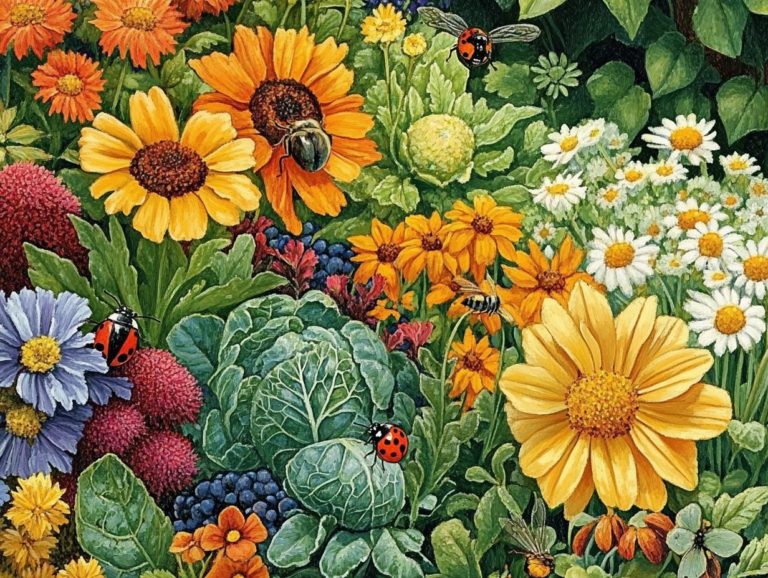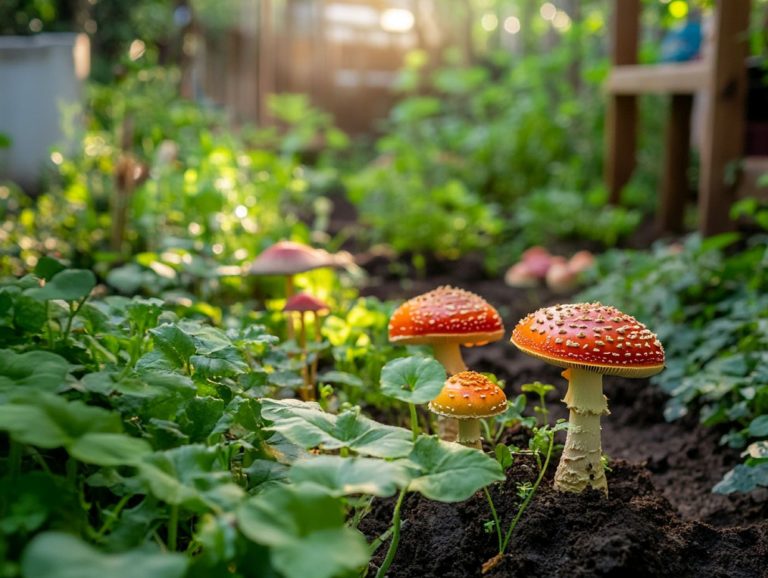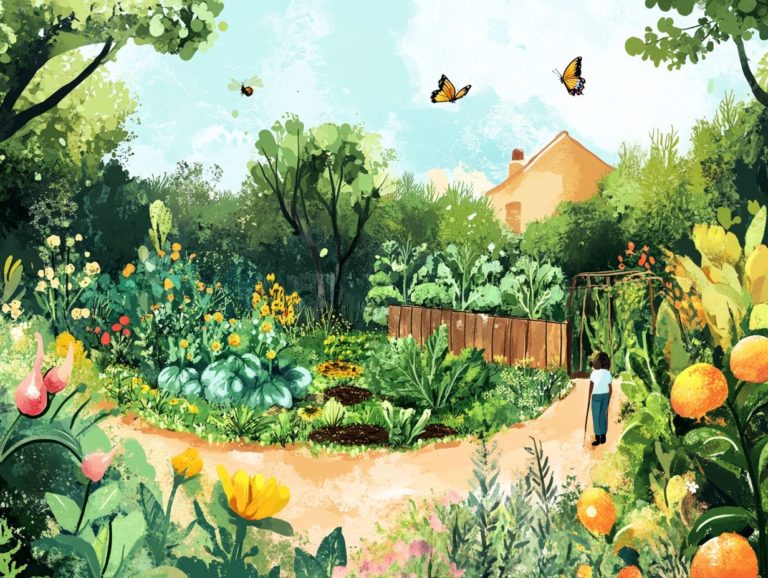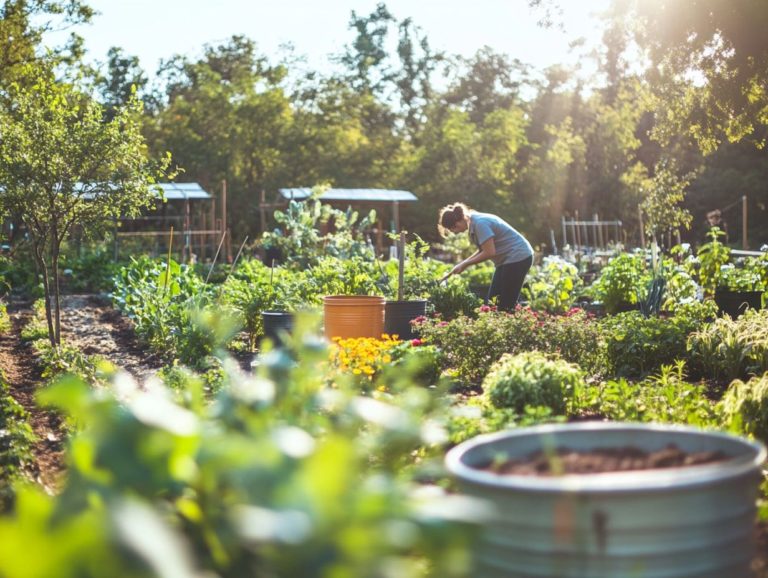What is Companion Planting in Permaculture?
Companion planting is an intriguing aspect of permaculture that seamlessly merges the art and science of gardening.
It involves the thoughtful pairing of plants to elevate growth, enrich soil health, and naturally ward off pests. This article delves into the many benefits of companion planting, ranging from enhancing your garden s vitality to selecting the ideal plant pairings.
Discover practical techniques, inspiring examples, and essential tips for successful implementation, all designed to help you cultivate a flourishing and harmonious garden.
Contents
- Key Takeaways:
- Benefits of Companion Planting
- How to Choose Companion Plants
- Common Companion Planting Techniques
- Examples of Successful Companion Planting
- Tips for Implementing Companion Planting in Permaculture
- Frequently Asked Questions
- What is Companion Planting in Permaculture?
- Curious about the benefits of Companion Planting in Permaculture?
- How does Companion Planting work in Permaculture?
- Can any plants be grown together through Companion Planting?
- What are some popular Companion Planting combinations in Permaculture?
- What Are Other Uses for Companion Planting in Permaculture?
Key Takeaways:
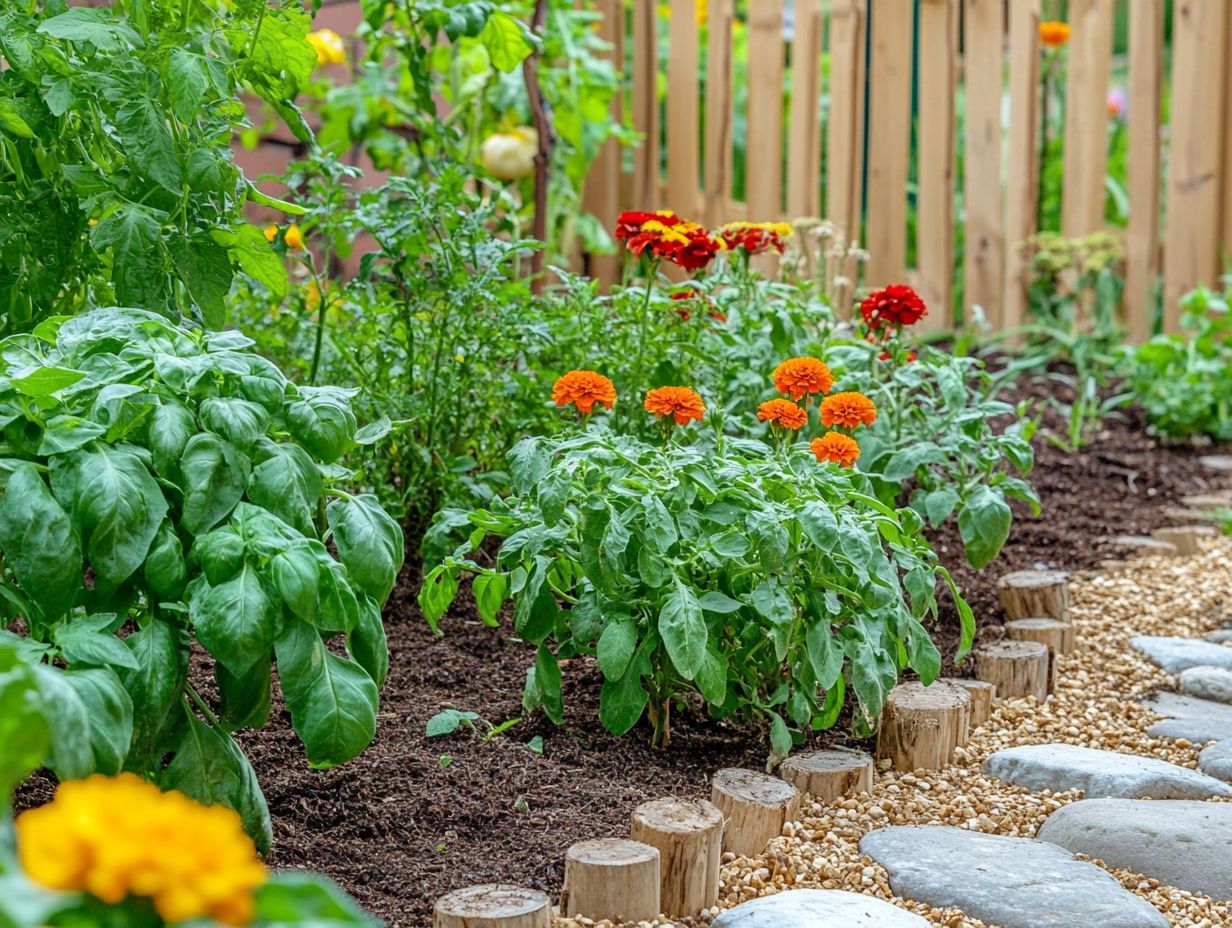
- Companion planting is a technique used in permaculture to promote plant symbiosis and improve soil health. It can also help with pest control and increase crop yield.
- When choosing companion plants, consider factors such as soil type, sun exposure, and plant compatibility. Successful combinations can include herbs, flowers, and root vegetables.
- Interplanting and succession planting are common techniques used in companion planting. These methods maximize space and resources while also benefiting the plants.
Defining Companion Planting and Its Purpose
Companion planting is more than just a gardening trend; it s a strategic approach within permaculture design that allows you to grow different plants together for enhanced beneficial interactions, resulting in a resilient organic garden. This method not only optimizes your space but also fosters a polyculture system, essential for maintaining biodiversity and promoting healthy food-producing gardens.
By grasping the principles behind companion planting, you can create effective planting schemes that deliver both ecological and agricultural benefits.
Rooted in the wisdom of traditional agricultural practices, this technique has been utilized for centuries, with ancient civilizations recognizing the importance of nurturing plant relationships. Take, for instance, the classic trio of corn, beans, and squash known as the Three Sisters. These plants support each other beautifully: corn acts as a natural trellis for beans, while squash leaves provide soil protection and moisture retention.
Integrating aromatic herbs like basil with tomatoes not only deters pests but also enhances the flavor of your harvest. With thoughtful planning and an understanding of plant interactions, you can design strategically arranged beds that maximize growth and minimize challenges, ultimately leading to a more healthy and productive garden.
Benefits of Companion Planting
Companion planting presents a wealth of benefits, from enriching soil health to boosting biodiversity, establishing itself as a fundamental principle of organic gardening.
By thoughtfully pairing plants, you can enhance your yields while simultaneously attracting beneficial wildlife, supporting natural pest control, and cultivating a more resilient ecosystem within your vegetable garden. This holistic approach reduces reliance on synthetic fertilizers and pesticides, ultimately contributing to a healthier planet.
Improving Soil Health and Pest Control
Improving soil health and controlling pests through companion planting is essential for you as an organic gardener, significantly boosting the productivity and sustainability of your garden ecosystem.
By integrating nitrogen-fixing plants, like beans, into your diverse planting scheme, you can enrich your soil naturally while also deterring pests through beneficial interactions with other crops. These plants naturally add nitrogen to the soil, promoting healthy growth.
Take marigolds, for example. When you plant them alongside your vegetables, they introduce a splash of vibrant color and help repel nematodes and aphids, acting as a natural pest deterrent. Placing herbs like basil near your tomatoes can enhance their flavor while keeping harmful insects at bay, elevating both the health and taste of your garden produce.
This thoughtful pairing strengthens the vitality of your soil and nurtures a thriving ecosystem where plants mutually benefit from each other s presence, fostering a healthier, more resilient garden environment.
Start your companion planting journey today and watch your garden thrive!
How to Choose Companion Plants
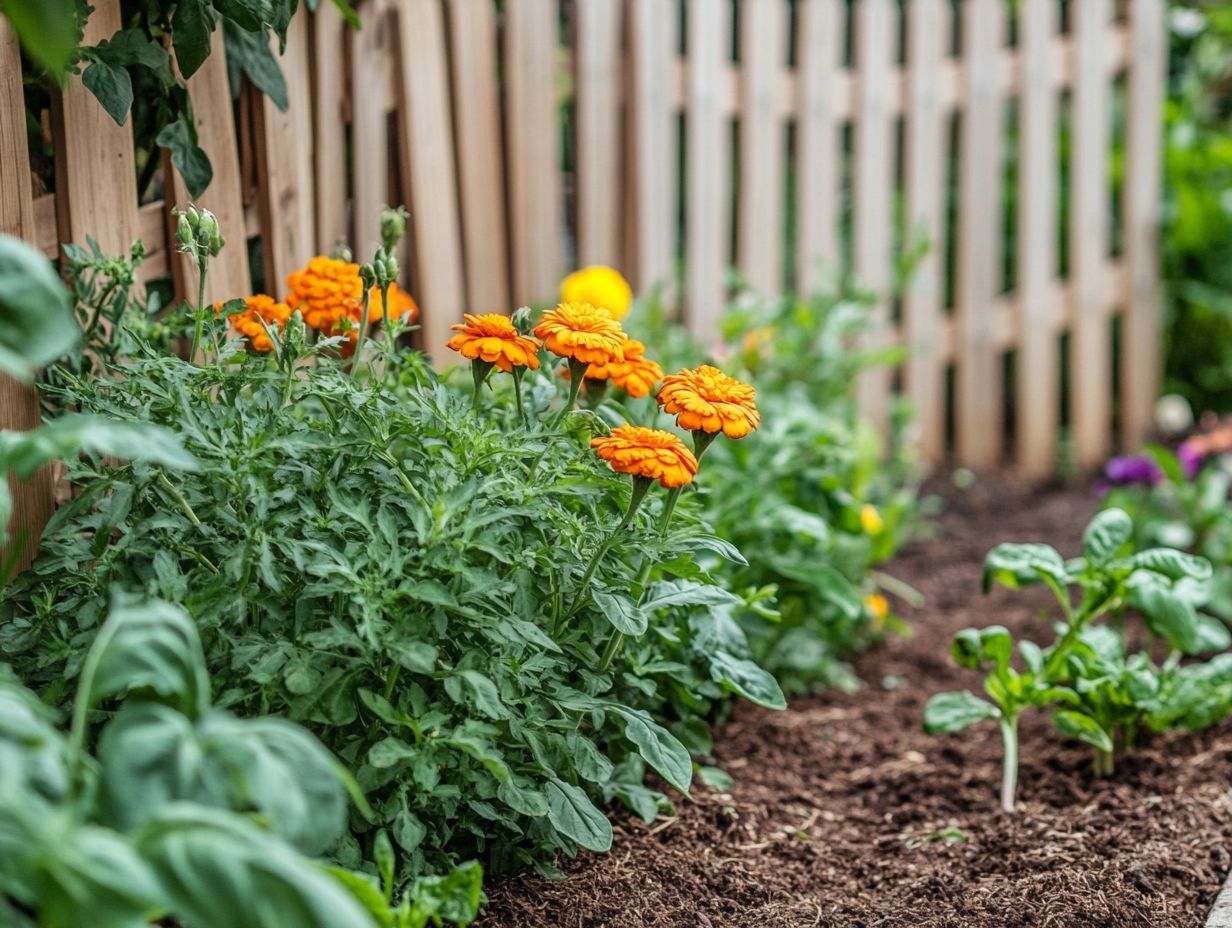
Choosing the right companion plants requires careful attention. Consider growth habits, nutrient needs, and pest-repelling features to cultivate a flourishing organic garden and avoid a mono-crop approach.
By grasping the principles of companion planting, you can optimize yields while fostering positive interactions among your plants. Careful garden planning is essential. Selecting incompatible combinations can result in competition for resources, reduced yields, and increased pest issues.
Factors to Consider when Selecting Plants
When choosing companion plants, it s essential to think about their growth habits, nutrient requirements, and how they might interact beneficially. This creates a harmonious ecosystem in your garden.
Key factors like height, root structure, and flowering cycles play crucial roles in maximizing space and cultivating a thriving organic garden.
For example, taller plants can cast shade on shorter varieties, shielding them from harsh sunlight. Deep-rooted plants can break up compacted soil and tap into nutrients at various depths.
By aligning the flowering cycles of your companion plants, you can boost pollination and improve pest control, fostering a balanced environment. Keeping these considerations in mind enables you to make informed choices that not only optimize growth but also enhance the aesthetic appeal of your garden.
Understanding these dynamics paves the way for a bountiful harvest, enriching your food-producing gardens and creating a vibrant garden ecosystem.
Common Companion Planting Techniques
Common companion planting techniques, like interplanting and succession planting, are vital for optimizing space and fostering a thriving system in your organic garden. These methods not only boost biodiversity but can also substantially improve pest control and soil health.
By grasping and applying these techniques, you can cultivate a vibrant tapestry of growing different types of plants together that harmonize beautifully, maximizing the myriad benefits of companion planting.
Interplanting and Succession Planting
Interplanting and succession planting are two exceptional techniques that can elevate the diversity and productivity of your organic garden while maximizing the advantages of companion planting. Interplanting involves placing different plants in close proximity to promote beneficial interactions.
Succession planting focuses on timing to ensure continuous harvests and optimal garden space utilization. Together, these strategies create vibrant planting schemes that support a resilient ecosystem.
By incorporating interplanting, you can cultivate beneficial relationships between varieties like tomatoes and basil, where basil naturally repels pests that might threaten your tomatoes. Meanwhile, succession planting allows you to stagger crops like lettuce, which can be sown every few weeks, ensuring a steady supply throughout the season.
Implementing these methods not only boosts your food production but also enhances soil health and minimizes pest pressure, fostering a thriving garden environment. For those just beginning to explore these techniques, starting small with a few raised beds can make the process more manageable, allowing you to easily observe which combinations work best.
Examples of Successful Companion Planting
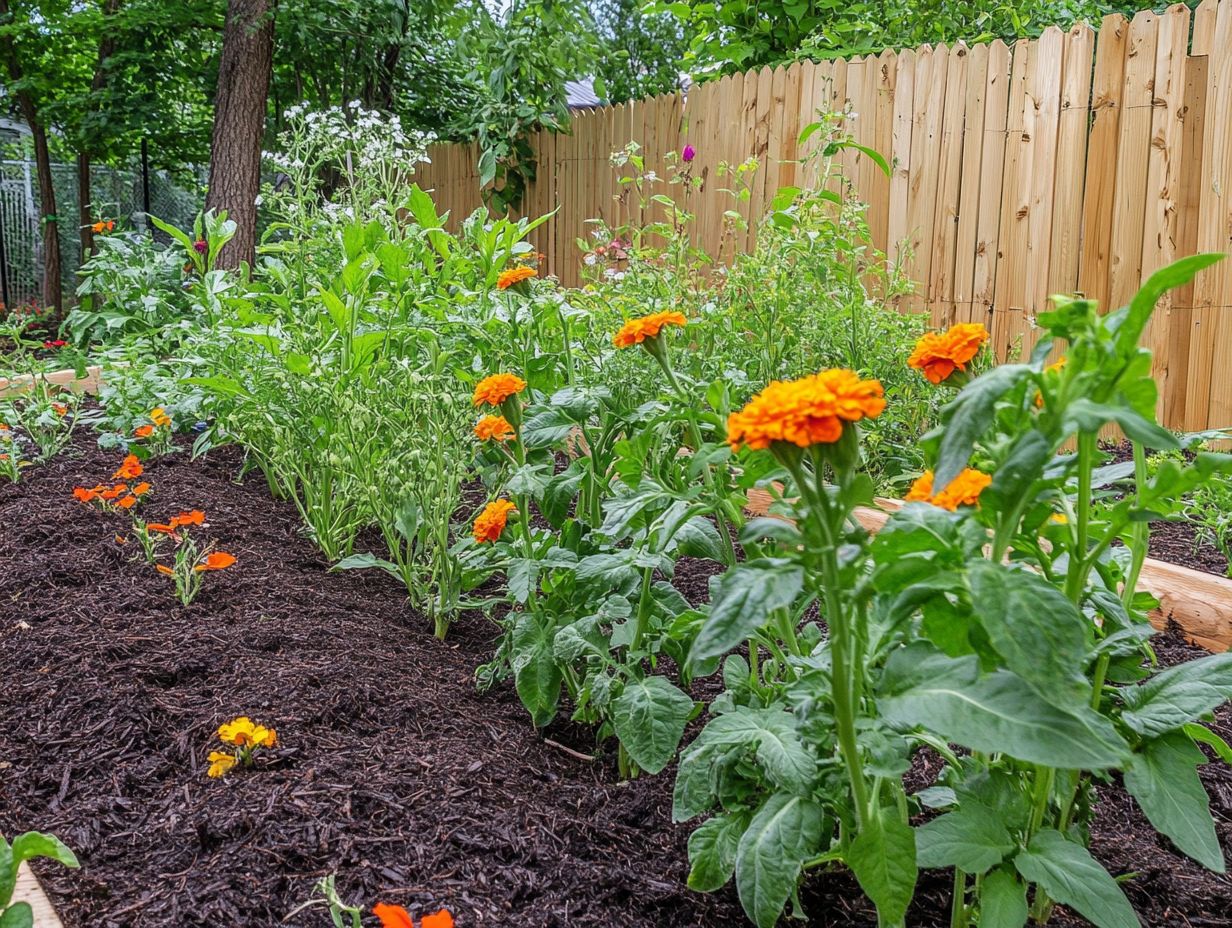
Successful examples of companion planting demonstrate how various combinations can significantly enhance the health and productivity of your organic garden.
Take the Three Sisters Method, for example. This technique involves planting corn, beans, and squash together, creating a living support system in your garden.
You might also consider popular pairings like tomatoes with basil and garlic or marigolds alongside your vegetables. These combinations not only fend off pests but also attract beneficial wildlife, ultimately fostering a vibrant and thriving garden ecosystem.
Popular Combinations and their Benefits
Popular combinations in companion planting, such as pairing tomatoes with basil and garlic or marigolds with a variety of vegetables, showcase the myriad benefits this technique offers for your organic garden. These thoughtful pairings can deter pests while elevating flavor profiles and attracting beneficial wildlife. This fosters a holistic gardening approach. By grasping the specific advantages of these combinations, you can significantly enhance the health and productivity of your vegetable garden.
Take, for instance, the synergy of planting basil alongside tomatoes. Not only does it amplify their flavor, but it also acts as a repellent for pesky insects like aphids and whiteflies that often target tomatoes. Placing marigolds near your crops helps fend off nematodes that threaten plant roots, adding another layer of protection.
As you cultivate your garden, consider embracing the principles of permaculture. Diversity and synergy are key to creating a vibrant ecosystem. To execute these combinations effectively, it’s essential to plan your garden layout with the growth habits of paired plants in mind. Ensure that taller plants don t overshadow their shorter companions to maximize sunlight exposure. This ultimately boosts your overall yield.
Tips for Implementing Companion Planting in Permaculture
Implementing companion planting in permaculture demands a thoughtful, holistic approach that carefully considers ecological balance, plant relationships, and meticulous garden planning.
Follow best practices to cultivate thriving gardens. This approach harnesses the strengths of various plant combinations. This method not only fosters a robust ecosystem but also maximizes your yields while significantly reducing the need for chemical inputs.
Best Practices for a Successful Garden
Best practices for creating a successful garden through companion planting revolve around understanding plant relationships. Maintain healthy soil and apply permaculture ideas that promote sustainability. Focus on nurturing beneficial interactions and ensuring a balanced ecosystem that supports your organic gardening endeavors.
Select the right combinations of plants today to supercharge growth and keep pests away. For instance, pairing marigolds with your vegetables can naturally keep those pesky insects at bay. Herbs like basil can elevate the flavors of your nearby tomatoes.
Good soil management is crucial. Adding organic matter like compost boosts soil fertility and structure. Embracing permaculture techniques, like crop rotation and mulching, helps sustain the health of your garden ecosystem.
Ultimately, creating a vibrant garden hinges on fostering these synergistic relationships. They not only improve yield but also promote a more sustainable approach to gardening.
Frequently Asked Questions
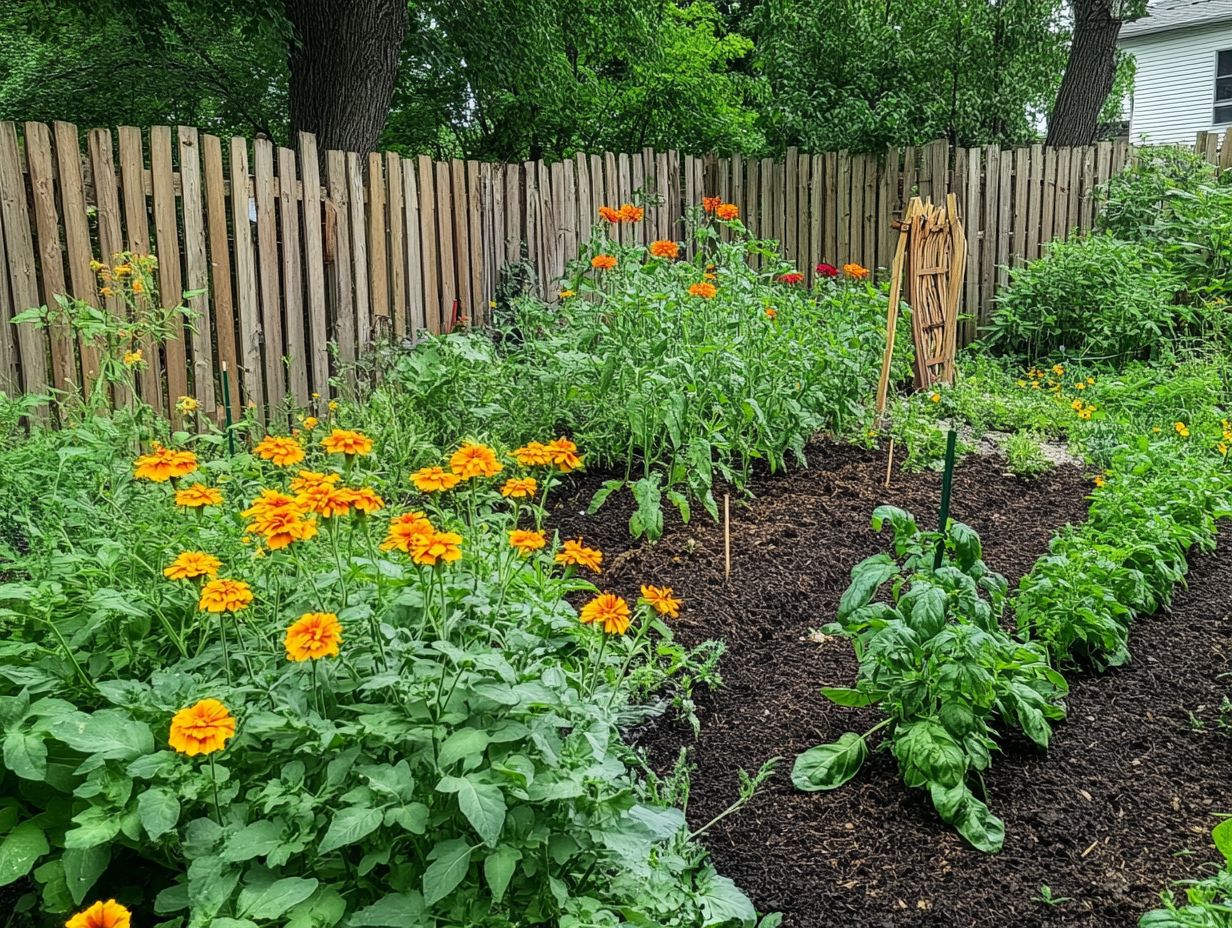
What is Companion Planting in Permaculture?
Companion planting in permaculture is the practice of growing different plant species close to each other for mutual benefit. It is based on the belief that certain plants can enhance the growth and health of others through natural symbiosis, such as in forest gardening in permaculture.
Curious about the benefits of Companion Planting in Permaculture?
Companion planting in permaculture has many benefits, such as attracting beneficial insects, improving soil quality, repelling pests, and maximizing space and resources.
How does Companion Planting work in Permaculture?
Companion planting works by creating a diverse and balanced ecosystem in the garden. The different plants support each other through nutrient exchange, pest control, and improved pollination.
Can any plants be grown together through Companion Planting?
No, not all plants are suitable for companion planting. It is important to research which plants have symbiotic relationships and which ones may compete or harm each other when grown together.
What are some popular Companion Planting combinations in Permaculture?
Some popular companion planting combinations in permaculture include the “Three Sisters” trio of corn, beans, and squash, as well as tomatoes and basil, and carrots and onions.
Ready to transform your garden? Start implementing these tips for a healthier, more productive space!
What Are Other Uses for Companion Planting in Permaculture?
Companion planting isn t just for growing food. You can also use it for health benefits, attracting bees and butterflies, and enhancing your garden’s overall health.
This method creates natural barriers that protect your plants. It s a simple way to create a thriving ecosystem right in your backyard!

